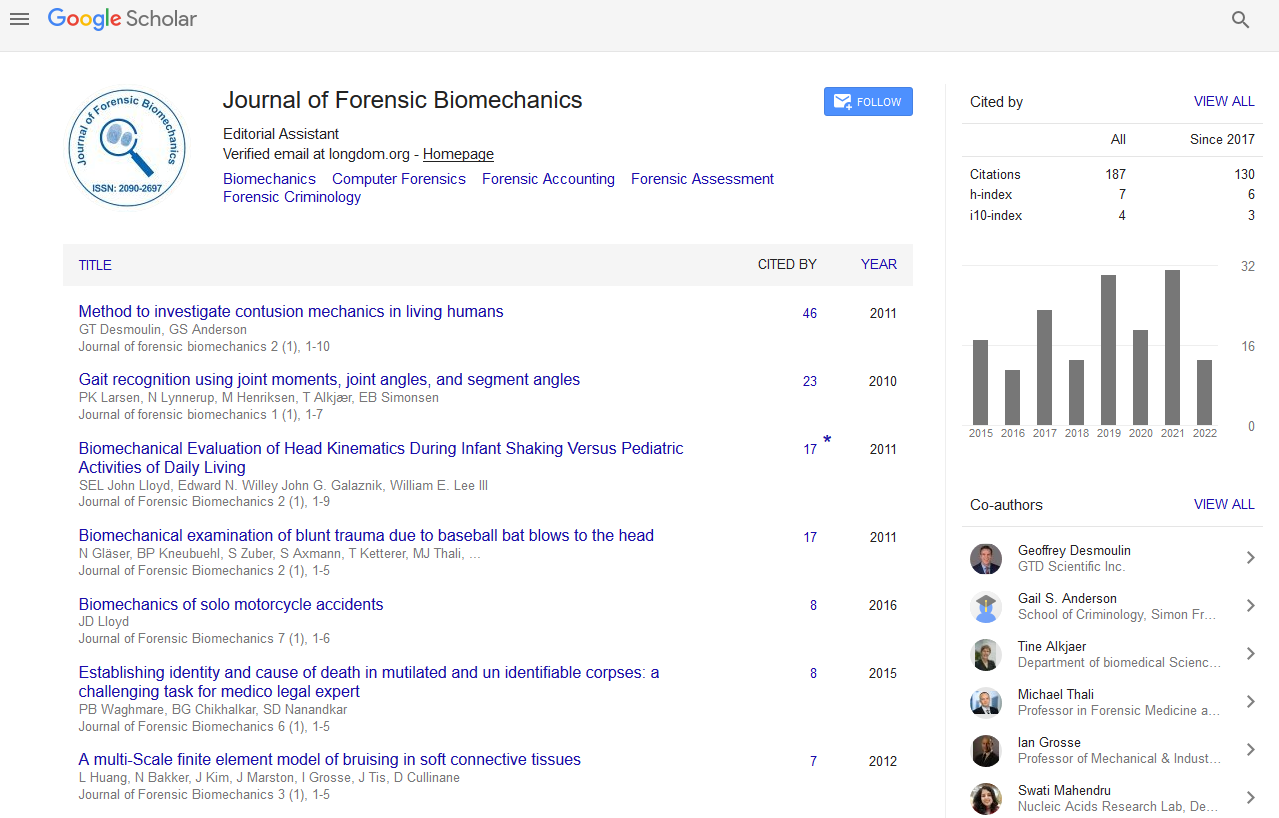Indexed In
- Genamics JournalSeek
- SafetyLit
- Ulrich's Periodicals Directory
- RefSeek
- Hamdard University
- EBSCO A-Z
- Geneva Foundation for Medical Education and Research
- Euro Pub
- Google Scholar
Useful Links
Share This Page
Journal Flyer

Open Access Journals
- Agri and Aquaculture
- Biochemistry
- Bioinformatics & Systems Biology
- Business & Management
- Chemistry
- Clinical Sciences
- Engineering
- Food & Nutrition
- General Science
- Genetics & Molecular Biology
- Immunology & Microbiology
- Medical Sciences
- Neuroscience & Psychology
- Nursing & Health Care
- Pharmaceutical Sciences
Abstract
Kinematic Analysis of Naive Shooters in Common Law Enforcement Encounters
Michael A Kantor*, William J Lewinski, Hina Garg, Joel Tenbrink, Jeff Lau and Robert W Pettitt
Purpose: To kinematically analyze naive shooters during eight common shooting motions frequently encountered in previous assaults on Law Enforcement Officers (LEOs).
Methods: A total of 20 naïve male shooters (age=27 y ± 4 y; body weight=82 kg ± 14 kg; height=181 cm ± 6 cm) completed 3 trials of each stationary and dynamic movement wearing body sensor technology (ADPM Technologies, Portland, OR). Time to complete each of the eight motions was recorded in seconds. A laser point training pistol was fired at a paper silhouette shaped like a LEO. Kinematic motions were examined by descriptive analysis, variability within the trials assessed by a reliability analysis, and between group differences across each of the motion type categories determined by repeated measures ANOVAs.
Results: Times (s) for each shooting scenario were as follows: Shooting seated and facing toward the driver’s -side window (0.50 ± 0.25); shooting seated and facing toward the passenger’s side window (0.64 ± 0.29); waistband draw facing LEO (1.13 ± 0.21); shooting positioned 90° to target then fleeing (0.42 ± 0.12); shooting facing the target then turning 180° and fleeing (0.38 ± 0.11); with back facing target, rotating the torso, shooting, then fleeing (0.49 ± 0.12); fleeing, then shooting over the opposite shoulder (0.51 ± 0.14) and; fleeing then shooting under the opposite shoulder (0.64 ± 0.22). Standard error of measurements for the 3 trials ranged 0.04 s to 0.12 s. Time to back and head rotation in fleeing conditions ranged 0.41 s to 0.43 s following weapon discharge.
Conclusion: This study demonstrates rapid execution and consistency during eight common LEO encounters suggesting a short decision-making timeframe. Future research should examine the training and legal implications of these findings.
Published Date: 2022-09-13; Received Date: 2022-08-11

